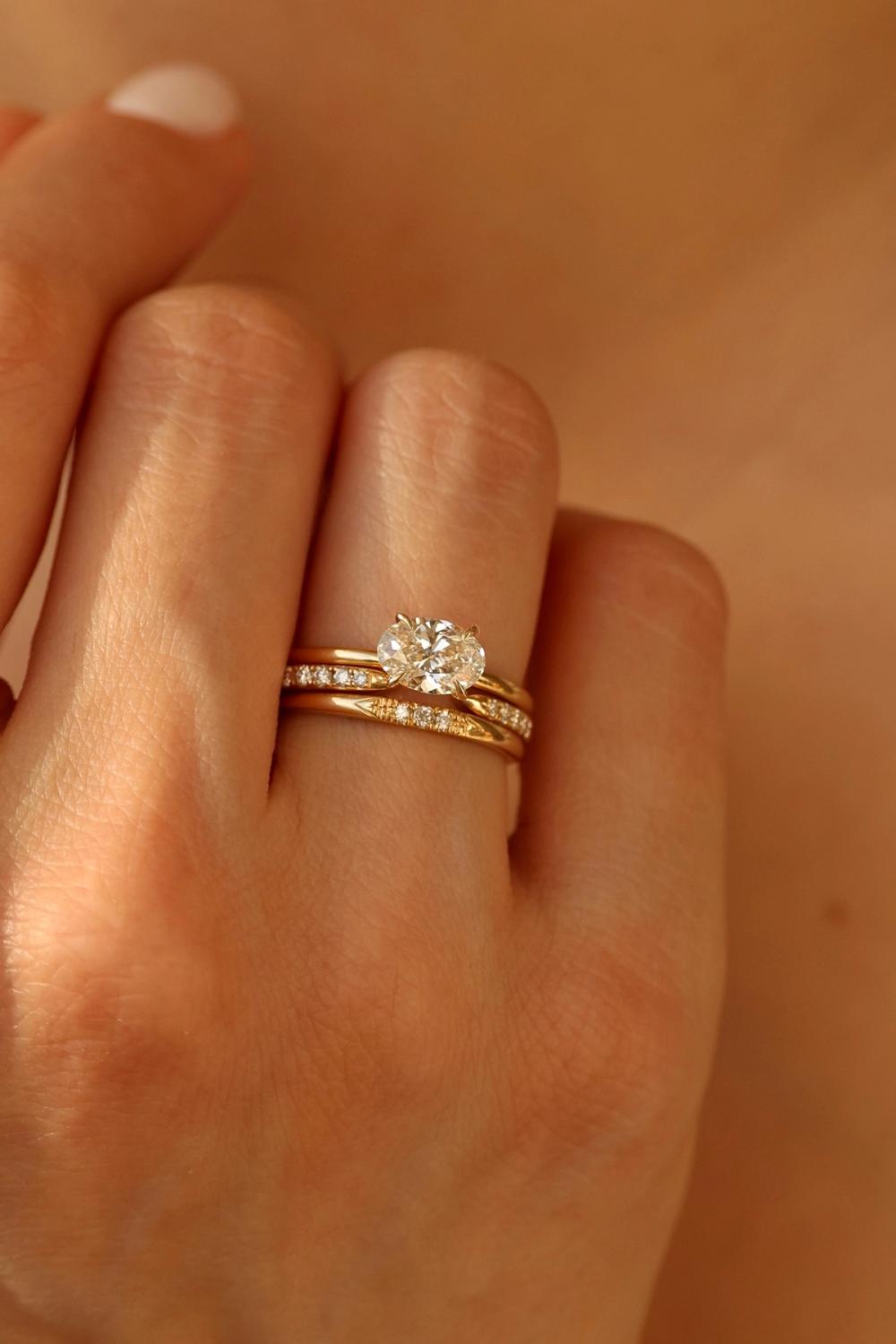Language and currency settings
Change your language and currency settings by selecting your preferences below
Select currency
Select language
Why We Are Offering Lab-Grown Diamonds as the First Jeweler in Norway
In a response to the ugly reality of the mined diamond industry, Nangi is proud to offer our customers a conflict-free and sustainable alternative through a variety of beautiful lab-grown diamonds.

Above: Our Big East-West Oval Swan ring stacked together with our Diamond Snake Tail and Baby Diamond Band
These babies aren’t only atomically identical and equally stunning as their mined counterparts, they are more sustainable, ethical and eco-friendly.
Mined diamonds are often called blood diamonds or conflict diamonds due to their association with ugly wars and conflicts. Despite global efforts to ban conflict diamonds the past two decades, the mined diamond industry is still tainted by conflict and misery.
Nangi was the first Norwegian jeweler to offer the conflict-free alternative lab-grown diamonds.

Lab-Grown Diamond vs Mined
- A diamond is a diamond. Atomically identical to earth mined diamonds, our laboratory-grown diamonds are created in a lab, utilizing solely renewable energy, meaning that the origin of our diamonds is certain.
- Lab-grown diamonds offer the exact same clarity and quality as mined ones. The only difference is that they are created in a more sustainable and eco-friendly way.
- Lab-grown diamonds also go under the name "man-made diamonds", "lab-made diamonds", and "cultured diamonds". Some refer to them as "synthetic diamonds", but this is not the case as they are 100% anatomically identical to a mined diamond.
One of the World's Most Polluting Industries
Diamond mining takes a heavy toll on the environment, the miners, and communities surrounding the mine.

- Mining a 1 carat diamond entails:
- 250 tons of earth removed
- 500 liters of water used
- 60 kilos (143 lbs) of carbon dioxide emitted
- 57 kilos (2’011 ounces) of air pollution released

Pictured above you can see the Mirny diamond mine in Siberia. The mine is over 1,2 km wide – large enough to be seen from space.
Learn more about the difference between lab-grown vs mined diamonds here.
Bling Certificate
- Lab-created diamonds are graded and certified using the same process as mined diamonds.
- Every Nangi diamond over 0.60-0.70 carat receives a certification.

Oh no, They are Not Synthetic
- In 2018, the definition of “diamond” was redefined by removing the word “natural” to include lab-grown diamonds as well. According to the U.S. Federal Trade Commission (FTC), diamonds are now “A mineral consisting essentially of pure carbon crystallized in the isometric system”.
- The FTC declared about lab-grown diamonds: “These stones have the same optical, physical, and chemical properties as mined diamonds. Thus, they are diamonds.”

Above: Serendip Solitaire
A Sparkly Fortnight
- It takes approximately 2-3 weeks to grow a rough diamond that will yield a 1 carat gemstone.
- Cutting and polishing takes another 4-8 weeks.
Value for Money
- No diamond is free, but due to the shorter supply chain and no middlemen markups, lab-grown diamonds are less expensive than mined diamonds.
- This means that you get more value for your money.

Leonardo DiCaprio and Julia Roberts Are Wearing Them!
- Leonardo DiCaprio made headlines in 2015 by investing in Diamond Foundry Inc., a San Francisco manufacturer of lab-grown diamonds. DiCaprio starred in the 2006 film Blood Diamond and in turn drew attention to the issue of gem mines financing warlords.
- Penelope Cruz, Reese Witherspoon, Julia Roberts, Drake, Olivia Colman and others, proudly wear lab-grown diamonds on the red carpet. They, like DiCaprio, see the benefit of wearing jewelry that not associated with child labor, conflict, or environmental destruction.
Did you know that Nangi is a certified partner of Leonardo DiCaprio’s Diamond Foundry Inc., as the only jeweler in Norway?
The Future is Bright
We can create your dream piece of jewelry from our large selection of lab-grown diamonds. Read more about our custom design process to create a piece from scratch, our browse our large selection of lab-grown diamond rings.

Check out the article the Norwegian business newspaper Finansavisen wrote on Nangi and our diamonds.
Join the Nangi family!
Read similar posts






Join the Nangi family!
Subscribe to our newsletter to be the first to know when we release new one-of-a-kind pieces, and gain exclusive access to secret sales and events
Norsk side
Nangi Fine Jewelry © 2024